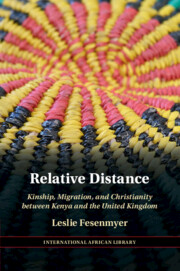Refine search
Actions for selected content:
77 results
Introduction
-
- Book:
- The Generalissimo
- Published online:
- 31 July 2025
- Print publication:
- 14 August 2025, pp 1-10
-
- Chapter
- Export citation
Introduction to Volume III
-
-
- Book:
- The Cambridge History of the Holocaust
- Published online:
- 16 May 2025
- Print publication:
- 12 June 2025, pp 8-23
-
- Chapter
- Export citation
5 - The Rise of the Next-Generation Hawks in the 2000s
-
- Book:
- The Rise of the Russian Hawks
- Published online:
- 11 June 2025
- Print publication:
- 29 May 2025, pp 127-169
-
- Chapter
- Export citation
Overcoming Childlessness: Narratives of Conception in Early Modern North India
-
- Journal:
- Medical History / Volume 68 / Issue 4 / October 2024
- Published online by Cambridge University Press:
- 05 February 2025, pp. 359-375
-
- Article
-
- You have access
- Open access
- HTML
- Export citation
4 - Hadrons
-
- Book:
- Introduction to Elementary Particle Physics
- Published online:
- 08 November 2024
- Print publication:
- 27 June 2024, pp 130-182
-
- Chapter
-
- You have access
- Open access
- HTML
- Export citation
2 - London
-
- Book:
- Politics of the Past
- Published online:
- 05 April 2024
- Print publication:
- 11 April 2024, pp 69-103
-
- Chapter
- Export citation
3 - Huddersfield
-
- Book:
- Politics of the Past
- Published online:
- 05 April 2024
- Print publication:
- 11 April 2024, pp 104-135
-
- Chapter
- Export citation
Rare inheritance studies on yellow sarson for petalous and apetalous traits
-
- Journal:
- Plant Genetic Resources / Volume 22 / Issue 2 / April 2024
- Published online by Cambridge University Press:
- 04 March 2024, pp. 125-130
-
- Article
- Export citation
THE
 $\boldsymbol {(2,3)}$-GENERATION OF THE FINITE SIMPLE ODD-DIMENSIONAL ORTHOGONAL GROUPS
$\boldsymbol {(2,3)}$-GENERATION OF THE FINITE SIMPLE ODD-DIMENSIONAL ORTHOGONAL GROUPS
- Part of
-
- Journal:
- Journal of the Australian Mathematical Society / Volume 117 / Issue 2 / October 2024
- Published online by Cambridge University Press:
- 28 February 2024, pp. 130-148
- Print publication:
- October 2024
-
- Article
-
- You have access
- Open access
- HTML
- Export citation
6 - Intergenerational Transmission of Laterals in Punjabi–English Heritage Bilinguals
-
-
- Book:
- The Phonetics and Phonology of Heritage Languages
- Published online:
- 15 February 2024
- Print publication:
- 22 February 2024, pp 129-146
-
- Chapter
- Export citation
8 - History and Cohort Effects in Romantic Relationships
-
-
- Book:
- The Sociocultural Context of Romantic Relationships
- Published online:
- 19 October 2023
- Print publication:
- 02 November 2023, pp 135-150
-
- Chapter
-
- You have access
- Open access
- HTML
- Export citation
Chapter 3 - Creativity
- from Part I - Cognition
-
- Book:
- Encouraging Innovation
- Published online:
- 17 August 2023
- Print publication:
- 31 August 2023, pp 27-40
-
- Chapter
- Export citation
3 - The Making of ‘Migrants’
-
- Book:
- Relative Distance
- Published online:
- 22 June 2023
- Print publication:
- 06 July 2023, pp 79-102
-
- Chapter
- Export citation
1 - Securing the Future: Family, Livelihoods, and Mobility
-
- Book:
- Relative Distance
- Published online:
- 22 June 2023
- Print publication:
- 06 July 2023, pp 30-54
-
- Chapter
- Export citation
4 - Kinship Dilemmas: Negotiating Relatedness across Space
-
- Book:
- Relative Distance
- Published online:
- 22 June 2023
- Print publication:
- 06 July 2023, pp 103-129
-
- Chapter
- Export citation
Introduction
-
- Book:
- Relative Distance
- Published online:
- 22 June 2023
- Print publication:
- 06 July 2023, pp 1-29
-
- Chapter
- Export citation
6 - Change and Continuity: The Social Reproduction of Families between Kenya and the United Kingdom
-
- Book:
- Relative Distance
- Published online:
- 22 June 2023
- Print publication:
- 06 July 2023, pp 160-185
-
- Chapter
- Export citation
2 - Aspirations, Obligations, and Imagination in Family Migration
-
- Book:
- Relative Distance
- Published online:
- 22 June 2023
- Print publication:
- 06 July 2023, pp 55-78
-
- Chapter
- Export citation

Relative Distance
- Kinship, Migration, and Christianity between Kenya and the United Kingdom
-
- Published online:
- 22 June 2023
- Print publication:
- 06 July 2023
Introduction
-
- Book:
- African Activists in a Decolonising World
- Published online:
- 02 March 2023
- Print publication:
- 09 March 2023, pp 1-21
-
- Chapter
- Export citation











